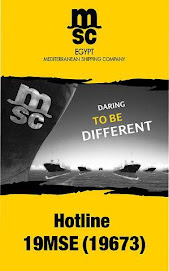Inter-Faith Strife Threatens World Peace
By Aya Kordy
Interfaith dialogue is a positive thing in the world today. We must be keen on understanding each other’s religions and traditions. Yet what seems like an effortless idea can be very arduous to accomplish. Most current political crises are either directly or indirectly related to religion. Very recently, a new phenomenon of Islamophobia grew in dimension and consequences after 9/11.
An increasing number of people believe that Islam is not a religion of respect or peace. On the other hand, Muslims try to make it clear that terrorism is clearly forbidden in the Quran. Muslims feel that they should not be judged on the actions of just a few. What the Islamophobe and the Muslims need is simply an inter-faith dialogue that can lead them to a mutual understanding.
September 11 was a day that marked the beginning of a great divide. On that day, two massive planes hit the World Trade Center in the United States of America. No one really knows the complete truth about this terrorist incident. Nevertheless, the paramount issue is why should people kill other people intentionally? Moreover, even if the United States as a country is criticized, it then becomes more logical to talk not fight. Many people were killed without any reason other than anti-American sentiments. If dialogue existed and if people listened to each other, this would have never happened.
On the 30th of September 2005, several caricatures showing Prophet Mohammed (PBUH) wearing a bomb-shaped turban were published by Danish newspapers. This triggered major protests in Muslim countries in 2006. Nonetheless, after this issue finally settled down, more Danish newspapers reprinted the same caricatures in 2008.
The newspapers republished the cartoons to show their dedication to freedom of speech after the police had discovered a plot to kill the artist, Kurt Westergaard, who drew the cartoons. Inter-faith dialogue never occurred between the artist and the Muslims who threatened him. On the other hand, if dialogue had existed between them the artist would have respected the Muslim’s beliefs and brought the crisis of the caricatures to an end.
Religions are different and so are traditions. This is what makes human beings diverse. Cooperation gives humans the power of understanding diversity that exists today. Nations and political/religious leaders have to be committed to respecting and loving each other since they are representing billions of people.
By Aya Kordy
Interfaith dialogue is a positive thing in the world today. We must be keen on understanding each other’s religions and traditions. Yet what seems like an effortless idea can be very arduous to accomplish. Most current political crises are either directly or indirectly related to religion. Very recently, a new phenomenon of Islamophobia grew in dimension and consequences after 9/11.
An increasing number of people believe that Islam is not a religion of respect or peace. On the other hand, Muslims try to make it clear that terrorism is clearly forbidden in the Quran. Muslims feel that they should not be judged on the actions of just a few. What the Islamophobe and the Muslims need is simply an inter-faith dialogue that can lead them to a mutual understanding.
September 11 was a day that marked the beginning of a great divide. On that day, two massive planes hit the World Trade Center in the United States of America. No one really knows the complete truth about this terrorist incident. Nevertheless, the paramount issue is why should people kill other people intentionally? Moreover, even if the United States as a country is criticized, it then becomes more logical to talk not fight. Many people were killed without any reason other than anti-American sentiments. If dialogue existed and if people listened to each other, this would have never happened.
On the 30th of September 2005, several caricatures showing Prophet Mohammed (PBUH) wearing a bomb-shaped turban were published by Danish newspapers. This triggered major protests in Muslim countries in 2006. Nonetheless, after this issue finally settled down, more Danish newspapers reprinted the same caricatures in 2008.
The newspapers republished the cartoons to show their dedication to freedom of speech after the police had discovered a plot to kill the artist, Kurt Westergaard, who drew the cartoons. Inter-faith dialogue never occurred between the artist and the Muslims who threatened him. On the other hand, if dialogue had existed between them the artist would have respected the Muslim’s beliefs and brought the crisis of the caricatures to an end.
Religions are different and so are traditions. This is what makes human beings diverse. Cooperation gives humans the power of understanding diversity that exists today. Nations and political/religious leaders have to be committed to respecting and loving each other since they are representing billions of people.




No comments:
Post a Comment